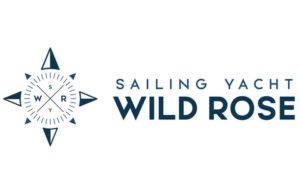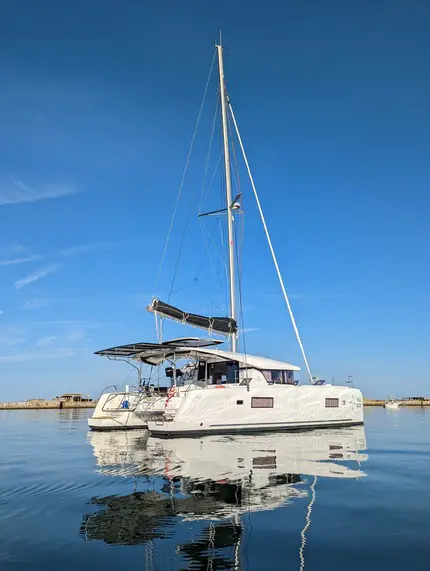The fuel consumption chart below shows your fuel burn rate, nautical miles per gallon or litre, and the range. This is for the dual Yanmar 57 horsepower engines that most people upgrade to when purchasing the Lagoon 42. I have yet to meet someone who didn’t upgrade their engines to the Yanmar 57’s.
Motoring on a Catamaran
When motoring or motor-sailing we rarely use two engines. We only use two engines when we are going on or coming off anchor, or we are maneuvering in tight quarters. If there is no wind we only motor on one engine. The reason for this is pretty simple, you really only gain a half a knot to one knot if you use both engines. It is way more efficient to use one engine at a higher RPM’s than to run two and have twice the fuel consumption.
We are cruisers and except for a closing weather window we usually aren’t in a rush to get anywhere. We would rather use less diesel and run on one engine at relatively low RPM’s
The other reason we only use one engine when motoring or motor-sailing is to keep the engine hours down. You have to maintain them, and that means fuel filters, oil filters, impellers, belts and oil. These things do add up, plus the fact that it takes time away from the fun stuff.
Heating up the Engine
There is much discussion about heating up the engines to reduce the amount of soot buildup running at lower RPM’s. One thing is crystal clear, running at low RPM’s for an extended period of time is probably not very good for your engines. So there’s the dichotomy, run at low RPM’s to conserve fuel and extend range, or run your engines hot to keep the soot buildup low.
Although there are many opinions on this, what most skippers do that I’ve spoken with is they run their engines at the desired RPM’s for the cruising they intend to do, then once every three hours they run their engines up to 3000 RPM’s for a few minutes.
Without further ado, below the the Range/MPG Chart.
Ship Log
Sign up below to be added to our email list for the Ship Log. We only post once or twice a month.

